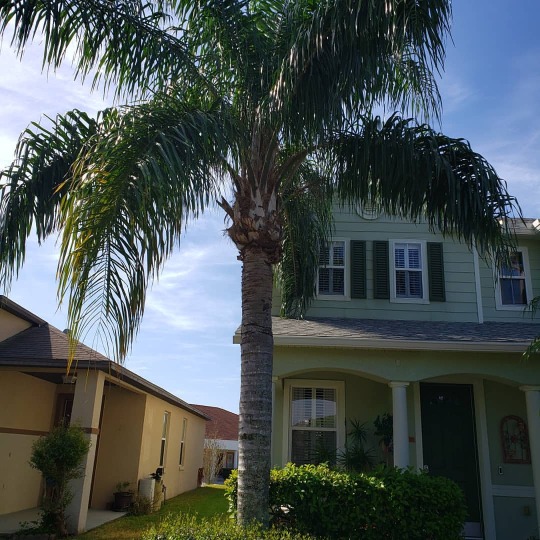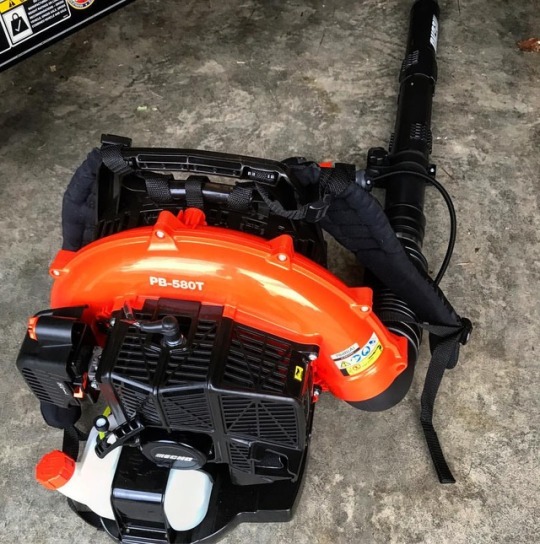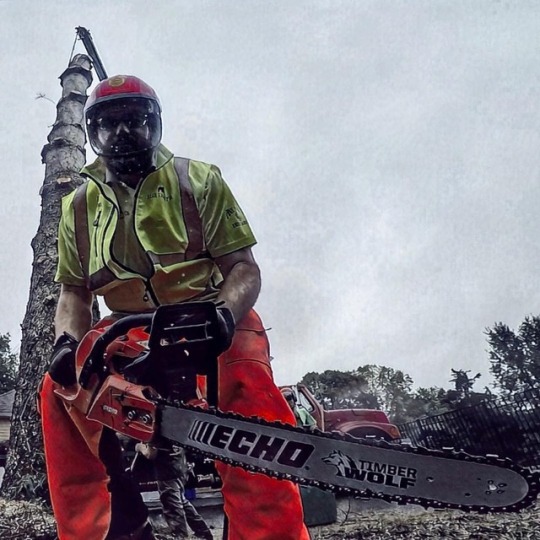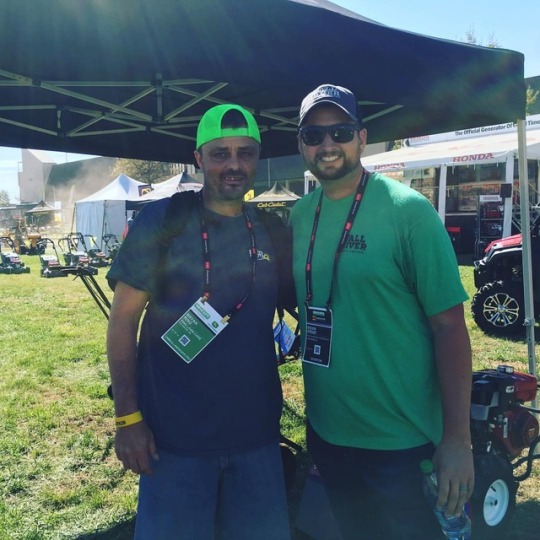#echousa
Explore tagged Tumblr posts
Photo

Another great driftless smile! #shenanigansflyfishing #echousa #troutbumflyco #TroutRoutes #fishitwell #onxhunt #sisterfisher https://www.instagram.com/p/CRHUl3LDLMv/?utm_medium=tumblr
0 notes
Photo

Another satisfied customer. Queen palm and Foxtails trimmed. With Spring right around the corner, let us enhance your curb appeal. #lawnscapersfl #echousa #toyotatundra https://www.instagram.com/p/CMX5Ob1LJ2o/?igshid=630oucki5ewn
0 notes
Photo

Please... tell me again how much of a #beast your #miniskid is? ❤️🌳💪🏻📷 #treebiz #notchequipment ##modulecart #firewood #treeremoval #arborist #njcontractor #echousa #echochainsaw #hardworkpaysoff #kaskhelmets #treework #treeservice #heavyweight #treestuff #hustletrees #lumberjack #sherrilltree #treesurgeon #tcia (at Berkeley Heights, New Jersey)
#sherrilltree#lumberjack#firewood#treeservice#hardworkpaysoff#treebiz#treeremoval#kaskhelmets#treestuff#miniskid#arborist#beast#treework#tcia#modulecart#echochainsaw#treesurgeon#njcontractor#hustletrees#echousa#notchequipment#heavyweight
1 note
·
View note
Photo

Air-cooled engines have to have air! Overheating is the number one cause of engine failure. You can help prevent overheating by: 1. Using the right brand and viscosity of engine oil. 2. Keeping an eye on your engine oil level and health. 3. Keeping the top of the engine clean from debris. 4. Making sure to check underneath the shroud work at least once a year for buildup, mice nest, bees nest, ECT. #problemsolving #mechaniclife #mechanic #mechanicsnightmare #mechanics #lovemechanics #technician #themechanicshopinc #rogersvilletennessee #smallengine #smallenginerepair #smallengineterror #smallenginemechanic #lawnmowerrepair #briggsandstratton #tecumseh #kohler #kawasaki #yamaha #honda #lawnmowerman #serviceandrepair #servicecenter #robin #subaru #mtd #murray #troybilt #husqvarna #johndeere @briggsandstratton @kohler_power @kawasakimotors @yamahamotorusa @hondapowerequipment @subaru_usa @troybilt @husqvarnausa @johndeere @scagmowers @exmarkmanufacturing @spartanmowers @badboymowers @gravelymowers @ferrismowers @simplicitymower @redmaxusa @makitatools @stihlusa @stihl @echousa @amsoilinc @rotarycorp (at The Mechanic Shop, Inc.) https://www.instagram.com/p/CEArkAkp24f/?igshid=1emqok72agnpg
#problemsolving#mechaniclife#mechanic#mechanicsnightmare#mechanics#lovemechanics#technician#themechanicshopinc#rogersvilletennessee#smallengine#smallenginerepair#smallengineterror#smallenginemechanic#lawnmowerrepair#briggsandstratton#tecumseh#kohler#kawasaki#yamaha#honda#lawnmowerman#serviceandrepair#servicecenter#robin#subaru#mtd#murray#troybilt#husqvarna#johndeere
4 notes
·
View notes
Video
instagram
#LawnCare 🔥Insta Story Has Done Been Dropped 🔥 @lawncarerookie has worked his butt off to get this thing together for lawn care, landscape & snow professionals. He, as well as many others who attended last years "After Party" at Pleasure Ridge Pizza in Louisville, Kentucky, witnessed the growth. #GIERally2017 💥💥💥💥💥💥💥💥💥💥 Using his influence, he has found several big name companies you may be familiar with, to sponsor this years after party. Understanding that the after party will continue to grow, this year it will be held @louisville_megacavern @thetorocompany @echousa @ventractractors @scagmowers #keepgrindinringahding #scagmowers #torozmaster #echousa #ventrac #lcrmedia @lcrmedia (at Louisville, Kentucky)
0 notes
Photo

Well it was a ☔️ #rainymorning here in #kcmo. Not much will get done today and more rain expected tomorrow. We had a blower go out, so we went and upgraded to this new Echo backpack blower. So far we are impressed with this thing! Echo hasn't let us down yet. #lawncare #lawnservice #landscapers #kansascity #echousablower #echousa #entrepreneurlife #lawncarelife #lawnwork
#rainymorning#kansascity#lawnservice#entrepreneurlife#landscapers#lawncare#echousa#lawncarelife#echousablower#kcmo#lawnwork
0 notes
Photo

New father's day addition to the Zombie Plan! 18" Echo CS400 chainsaw. I wanna put that thing on the mantle... after i cut down a tree to build a mantle! Check out the automotive style airfilter. I wonder if K&N makes airfilters for it. Ready for Hurricane Season, Zombies, Murder Hornets... (i know melee weapons are useless against flying attacks.) Thank you Horde for all the chainsaw suggestions recently. @homedepot really took care of me let me return the Ryobi electric chainsaw and get this @echousa chainsaw! #zombieplan #hurricaneplan #chainsaw #echo #echochainsaws https://www.instagram.com/p/CB9TyplJJ0V/?igshid=1l45yfcot99z6
0 notes
Photo

Fun fun fun on the water! Thank you Marci for the day and the laughs! #missmayflywaders #riverbumflyfishing #echousa #shenanigansflyfishing #sisterfisher https://www.instagram.com/p/CO-f0nRjNOK/?igshid=9njlk0jobpr9
0 notes
Photo

We received a call at 8pm last night for a yard rescue. HOA violation, went out this morning and took care of it. If your yard needs rescuing, give us a call! #lawnscapersfl #echousa #cubcadet #toyotatundra https://www.instagram.com/p/CFUydaOBi9r/?igshid=1xwjccqr0rztr
0 notes
Photo

This backyard is my battlefield and the dead and dangerous are my foes. ❤️☠️🌲📷 #pinebarkbeetle #treebiz #arborist #njcontractor #treeremoval #cranesinthesky #cranefame #cranes101 #echousa #treecare #tcia #bearvalleyco #treelife #treestuff #licensedtreeexpert #treework #pfannerprotos #echochainsaw #lumberlife #hivizlife #hustletrees (at Basking Ridge, New Jersey) https://www.instagram.com/p/BqGdWpGnpA_/?utm_source=ig_tumblr_share&igshid=1g79o5lbm3oe9
#pinebarkbeetle#treebiz#arborist#njcontractor#treeremoval#cranesinthesky#cranefame#cranes101#echousa#treecare#tcia#bearvalleyco#treelife#treestuff#licensedtreeexpert#treework#pfannerprotos#echochainsaw#lumberlife#hivizlife#hustletrees
1 note
·
View note
Photo

Cleaned up one of my #lawnmower yesterday and got it back looking new. Here is a tip #simplegreen works amazing when it soaks! . . . #floridalawnace #floridalandscaping #floridaparadise #lawnlifestyle #lawnlife #landscaping #landscapingdesign #landscapingphotography #orlandoflorida #orlandobeautiful #centralflorida #sky #blessed #lawnlovers #fall #red #toro #tropicallove #echousa #painting (at Conway, Florida) https://www.instagram.com/p/BqX5gsnBcQf/?utm_source=ig_tumblr_share&igshid=h2am8duqcagt
#lawnmower#simplegreen#floridalawnace#floridalandscaping#floridaparadise#lawnlifestyle#lawnlife#landscaping#landscapingdesign#landscapingphotography#orlandoflorida#orlandobeautiful#centralflorida#sky#blessed#lawnlovers#fall#red#toro#tropicallove#echousa#painting
0 notes
Photo

Thanks to @sarahnic0le_ and the folks at @baileysonline for the tour of their amazing #arborist supply facility in Woodland, CA. 👍🏼🇺🇸🌳 We’re excited to be bringing the #LogOX to their Demo Day tomorrow with other great brands like @petzl_official @oregonsawchain @granberginternational @echousa and @logosol_global The fun starts at 9am rain or shine! #TeamLogOX (at Bailey's Outdoor Power Equipment)
0 notes
Photo

#LawnCare I know this will not sound right, but I love this guy! 💥 He (Kevin Frost) is one of the good guys in our industry with many great perspectives on business, life, and product reviews.🔥Proud to call em friend! ✔️ #keepgrindinringahding @fallriverlc @scagmowers @echousa (at GIE+EXPO)
0 notes
Photo

EPISTLE OF ST. PAUL, THE APOSTLE, TO THE HEBREWS - From The Latin Vulgate Bible
Chapter 9
PREFACE.
The Catholic Church hath received and declared this Epistle to be part of the Canonical Scriptures of the New Testament, though some doubted of it in the first ages[centuries], especially in the Latin Church, witness St. Jerome on the 8th chap. of Isaias; Luther and most of his followers reject it, but the Calvinists and the Church of England have received it. Others, who received this Epistle in the first ages[centuries], doubted whether it was written by St. Paul, but thought it was written by St. Barnabas, or by St. Clement of Rome, or St. Luke, or at least that St. Paul only furnished the matter and the order of it, and that St. Luke wrote it, and St. Paul afterwards read it and approved it. It was doubted again, whether this Epistle was first written in Hebrew (that is, in Syro-Chaldaic, then spoken by the Jews) or in Greek, as Estius pretends. The ancient writers say it was written in Hebrew, but that it was very soon after translated into Greek either by St. Luke or St. Clement of Rome, pope and martyr. Cornelius a Lapide thinks the Syriac which we have in the Polyglot to have been the original; but this is commonly rejected. See Tillemont on St. Paul, Art. 46, and note 72; P. Alleman on the first to the Hebrews, &c. St. Paul wrote this letter about the year 63[A.D. 63], and either at Rome or in Italy. See Chap. xii. 24. He wrote it to the Christians in Palestine, who had most of them been Jews before. This seems the reason why he puts not his name to it, nor calls himself their apostle, his name being rather odious to the Jews, and because he was chosen to be the apostle of the Gentiles. The main design is to shew that every one's justification and salvation is to be hoped for by the grace and merits of Christ, and not from the law of Moses, as he had shewn in his Epistles to the Galatians and the Romans, where we many observe this kind of difference: To the Galatians he shews, that true justice cannot be had from circumcision and the ceremonies of the law: to the Romans, that even the moral precepts and works of the law were insufficient without the grace of Christ: and in this to the Hebrews, he shews that our justice could not be had from the sacrifices of the old law.
Chapter 9
The sacrifices of the law were far inferior to that of Christ.
1 The former indeed had ordinances of worship, and a worldly sanctuary.
Notes & Commentary:
Ver. 1. The former.[1] In the ordinary Greek copies is expressed the former tabernacle; but even the Protestant translators have abandoned that reading, and understand the former testament or covenant, which they have put in a different character. --- Worldly sanctuary, or a temporal sanctuary, to last only for a time, like the things of this world. (Witham) -- The word ordinances (dikaiomata) is frequently used for the laws and ordinances of God, because the observance of the laws is the justification of man; see particularly in the 118th Psalm, the legal rites justified in regard to the outward policy of the Jews.
Note 1:
Ver. 1. Habuit & prius, eiche e prote. Though almost all Greek copies have skene, tabernacle: yet even the Protestant translators add in a different print, covenant, as if diatheke was understood. Ibid.[Ver. 1.] Sanctum sæculare, kosmikon. This Greek word is only found in one other place in the New Testament, Titus ii. 12., sæcularia desideria.
2 For the first tabernacle was made, wherein were the candlesticks, and the table, and the setting forth of loaves, which is called the holy.
Ver. 2. First tabernacle. By this word is signified, the sanctuary or place for worshipping God, ordained by Moses, which was an oratory to be moved from place to place with the Israelites, which they kept afterwards, and had a resemblance of it in the temple. This tabernacle consisted of two parts, which St. Paul here calls the first and second. The first part was called the holy, which was separated from the rest of the temple by a veil. In this first part were the candlesticks, i.e. one candlestick, as it is called, Exodus xxv. 37., having seven branches in which were placed lamps; and a table, on which were placed twelve loaves, according to the number of the Jewish tribes, to be changed every week. (Witham)
3 And after the second veil, the tabernacle, which is called the holy of holies:
Ver. 3. And after the second veil, or partition, was the second or inward part, or that part called the holy of holies. (Witham) --- The first veil was at the entrance of the holy place, and separated it from the outward court; the second veil separated the holy place from the holy of holies.
4 Having a golden censer, and the ark of the covenant covered about on every part with gold, in which was the golden urn that had the manna, and the rod of Aaron that had blossomed, and the *tables of the testament.
Ver. 4. Having the golden censer. What is meant by this is uncertain, no mention being made of a golden censer in either part of the tabernacle made by the order of Moses, which the apostle here speaks of. Some say that the high priest, when he entered once a year into the holy of holies, made use of a golden censer, which he left there: but this is merely a conjecture. Others think that by the golden censer is meant the altar of perfumes, or where perfumes were burnt, which was, as it were a large censer, and is called by the same Greek word by Josephus, the historian; but then there occurs this difficulty, that this altar was in that first part called the holy, not in the holy of holies, to which the same interpreters answer, that this altar was placed just at the entrance into the holy of holies, and so may be looked upon as belonging to the holy of holies: not does the text say it was in the holy of holies, but only having, &c. as a town may be said to have fortifications which are not within the town itself. --- And the tables of the testament, or covenant. The ark was certainly in the holy of holies, in which[2] was the golden urn, with a measure of manna, and Aaron's rod that budded, and the tables of the testament, or the tables of stone, on which were engraven the ten commandments. Nothing but these tables were within the ark: (see 3 Kings viii. and 2 Paralipomenon v. 10.) so that when it is said, in which was the golden urn and the rod of Aaron, the meaning seems to be, that they were indeed in the holy of holies with the ark, but not within the ark. (Witham) --- In the Greek it is easy to confound the word thusiasterion, which signifies altar, with thumiaterion, which means censer. It was placed adjoining the inward veil, so that the clouds of the incense filled the holy of holies; and hence it is mentioned by St. Paul as contained therein. --- The apostle describes these things as they were in the tabernacle which Moses constructed in the desert. (Bible de Vence) --- We see with what great and continued respect and veneration the manna and Aaron's rod, &c. were kept by the Jews, and shall not Christians be allowed to preserve with equal respect the monuments of God's mercies, and tokens of Christ's passion? See St. Cyril, (lib. iv. contra Julianum) where he defends against the apostate, the keeping and honouring the cross on which Christ died. See also in St. Jerome (ep. xvii. chap. 5.) and in St. Paulinus, (ep. 11.) what reverence the faithful in those early periods of the Church paid to the sepulchres of Christ and his martyrs, as also to their relics. "We reverence and worship[honour]," says the latter, "the sepulchres of the martyrs; and, if we can, we apply the holy ashes to our eyes and mouth."
Note 2:
Ver. 4. Habens thuribulum aureum, chrusoun echousa thumiaterion. Josephus useth the same word for the altar of perfumes, lib. 6. The Jewish War, chap. vi. and lib. 3. Jewish Antiquities, chap. vii. Ibid.[Ver. 4.] In quâ, en e. It may signify the same as cum quâ.
5 And over it were the cherubims of glory overshadowing the propitiatory: of which it is not needful to speak now particularly.
Ver. 5. And over it (the ark) were cherubims of glory or glorious cherubims, (in what shape they were represented, is not certain) overshadowing the propitiatory, or seat of mercy, which was all of gold, of the same size as the ark, and like a cover to it. Just over this propitiatory were placed the two cherubs, spreading their wings looking towards one another, and upon the propitiatory. See Exodus xxxvi. and xxxvii. From this place God made known his presence, and the effects of his mercy to the people. Here he was said to be seated on the cherubims, and that the ark was his footstool. Psalm xcviii., Adore his footstool; i.e. prostrate before his ark. These two images of cherubs, shew that God did not absolutely forbid images at that time, when the people were so addicted to idolatry, but only to adore them. (Witham) --- How futile is it to object from the commandment that it is forbidden to use holy images in the Church, when we here behold even amongst the people most prone to idolatry, most gross in their ideas of spiritual things, and to whom the precept was specially given not to make any graven idols, the same God commanding these images of angels to be made and set in the most holy place of the tabernacle or temple.
6 Now these things being thus ordered: into the first tabernacle the priests indeed always entered, accomplishing the rites of the sacrifices:
Ver. 6. The rites of the sacrifices. The priests, as he tells us, entered every day, that is, by turns, (see Luke i. 5.) to make the offering of incense morning and night, also to change the loaves, take care of the lamps, &c. But we must not think that they offered in that place victims or holocausts of sheep, lambs, oxen, &c. This was not done in any part of the sanctuary, neither before nor after the building of the temple, but in a place or court adjoining the tabernacle, upon a large altar of five cubits long and as many broad. See Exodus xxvii. and xxxviii. (Witham)
7 But into the second, the high priest alone, once a year; not without blood, which he offereth for his own, and the people's ignorance:
Ver. 7. Into the second part of the sanctuary, (i.e. the holy of holies) no one entered but the high priest, and he but once a year, on the feast called of expiation, to make an aspersion of blood upon the ark and round about, which he offereth for his own and the people's ignorance, or ignorances, as in the Greek; that is, for all his and their sins. See Leviticus x. (Witham) --- He offered the blood of a calf for his own sins and those of his family, and the blood of a goat for the sins of the people. (Leviticus xvi.)
8 The Holy Ghost signifying this, that the way of the holies was not yet made manifest, whilst the former tabernacle was yet standing.
Ver. 8. The Holy Ghost signifying this. Here the apostle begins to tell us in what manner the sanctuary was a figure of things in the new law of Christ. The holy of holies was a figure of heaven, and this prohibition of any one going into it, was to signify that the way to heaven was not to be made manifest, nor to be opened, as long as the former tabernacle and law subsisted; that it was not to be opened till Christ, the high priest of the new testament, first entered, by shedding his blood on the cross, and by his glorious ascension. (Witham) --- But when Christ expired, the veil of temple was rent asunder, to shew that the way to heaven was now laid open to mankind.
9 Which is a parable of the time then present: according to which gifts and sacrifices are offered, which cannot, as to the conscience, make him perfect that serveth only in meats and in drinks,
10 And divers washings, and carnal ordinances, enjoined until the time of correction.
Ver. 9-10. Which is a parable of the time then present; or, unto the present time, as in the Greek. By the present time, according to the common exposition, is not meant the time of the new law, as some would have it, but the time of the former law; so that the sense is, which parable or type was a representation of things as they were to be performed, and to last during the time of the law, which was before present. --- According to which. Some understand, according to which time; others, according to which parable, type, or typical worship of the former law, gifts and sacrifices are (i.e. were, and are) still offered by those who adhere to the Jewish law and ceremonies, which cannot of themselves make such worshippers perfect in conscience; i.e. can never give true interior sanctification, being only in meats, and drinks, and baptisms, &c. These words must not be referred to gifts and sacrifices, but to the worshipper; (literally, server) and the sense is, that to the priests, who worshipped and served God in the sanctuary and in offering sacrifices, was not prescribed an interior purity and sanctity, as in the new law, but only that legal sanctity which consisted in abstaining from such meats or drinks as were called unclean, or made them unclean. See Leviticus x. 9., where the priests are forbidden to drink wine when they were to enter into the tabernacle of the testimony. --- In divers washings, &c. These precepts and ceremonies were only to last till the time of their correction, by the coming of Christ under the new and better law and testament. (Witham) --- Of correction; viz. when Christ should correct and settle all things. (Challoner)
11 But Christ coming, a high priest of the good things to come, by a greater and more perfect tabernacle, not made with hands, that is, not of this creation:
Ver. 11. Christ coming[3] is a high priest of the good things to come; of things which we hope for in heaven. --- He has entered by a more perfect tabernacle; i.e. not passing, like the priests of the former law, into a tabernacle made by human art and hands, but by the tabernacle of his own body or flesh, says St. Chrysostom, framed by the Holy Ghost. (Witham)
Note 3:
Ver. 11. Christus assistens, paragenomenos, which may signify being come, and present. Ibid.[Ver. 11.] Tabernaculum, skenes, by which St. Chrysostom expounds his body or flesh, ten sarka entautha legei log. ie. p. 513.
12 Neither by the blood of goats, or of calves, but by his own blood, entered once into the sanctuary, having obtained eternal redemption.
Ver. 12. By the blood of goats, &c. This is another difference and pre-eminence of Christ above the priests of the law of Moses, that they could only offer the blood of beasts; but Christ entered into heaven by the effusion of his own precious blood in his sufferings, and on the cross, by this having found an eternal redemption for mankind, having satisfied for the sins of all men in the sight of God, which the former priests, with all their sacrifices, could not do. (Witham) --- Eternal redemption. By that one sacrifice of his blood, once offered on the cross, Christ our Lord paid and exhibited, once for all, the general price and ransom of all mankind; which no other priest could do. (Challoner) --- The force of the apostle's reasoning is to convince the Jews of the inefficacy of the legal sacrifices, and of the virtue of the Christian sacrifice.
13 For if the blood of goats and of oxen, and the ashes of a heifer, being sprinkled, sanctify such as are defiled, to the cleansing of the flesh:
14 How much more shall the blood of Christ, who, through the Holy Ghost, offered himself without spot to God, cleanse our conscience from dead works, to serve the living God?
Ver. 13-14. For if the blood of goats, &c. Another main difference betwixt the sacrifices in the old, and that of Christ in the new law. Those imperfect carnal sacrifices could only make the priests and the people reputed clean, so that they were no longer to be treated as transgressors, and liable to punishments, prescribed and inflicted by the law: but the sacrifice of Christ has made our consciences interiorly clean, and sanctified them even in the sight of God. Having offered himself unspotted to God by the Holy Ghost, the divine Spirit of the Holy Ghost moving Christ as man to make this oblation of himself, though free from all sin, and incapable of sinning. And being this oblation, made by him, who was God as well as man, it was an oblation of infinite value, which repaired the injury done to God by sin, and redeemed mankind from the slavery of sin. (Witham) --- Here we have an abstract of the passion of Jesus Christ, or of the sacrifice of the cross. We see who is the priest, and who is the victim; we see the virtue and efficacy of this sacrifice, and why it was offered; also by what signs we may know whether we partake of it, viz. if dying to sin and to the world, we live to God, and serve him in spirit and truth. Calvin makes Jesus Christ a priest and mediator, according to his divinity; but in that case Christ would be inferior to his Father, not only as man, but according to his divinity: for the priest is inferior to the God to whom he offers sacrifice, which is an expression of supreme excellence. See Dr. Kellison's survey of the Protestant religion.
15 And, therefore, he is the mediator of the new testament: that by means of his death, for the redemption of those transgressions, which were under the former testament, they who are called may receive the promise of eternal inheritance.
Ver. 15. And therefore he is the mediator of the new testament.[4] The mediator, so as to be our Redeemer, which applies only to our Saviour, Christ. Moses is called a mediator betwixt God and his people. See Galatians iii. 19. and 1 Timothy ii. 5. &c. The saints in heaven, and men on earth, may be called mediators in an inferior and different sense: but Christ alone is the mediator who reconciled God to men, by satisfying for their sins, and by a redemption from the slavery of sin. This sense, in which Christ is the mediator of the New Testament is expressed in these following words: that by means of his death, for the redemption of those transgressions which were under the former testament, they who are called may receive the promise of eternal inheritance; that is, Christ by his death, redeemed all men. He names in particular the sins of those under the former testament, to shew them that the sacrifices of the Mosaical law could not of themselves obtain a remission of sins, so that all saved from Adam, or that shall be saved to the end of the world, have their sins forgiven, and obtain salvation by virtue of Christ's sacrifice upon the cross. He paid the ransom of their sins, and is the Redeemer of all. (Witham)
Note 4:
Ver. 15. Novi Testamenti, diathekes kaines. The Protestant translators here found it necessary to put, not covenant, as in other places, but testament, even when the apostle speaks of the first, or old diatheke, (Ver. 18. and 20.) might they not then as well have translated Testament in the last chapter, especially when mention was there made of the New Testament in the prophecy of Jeremias? might they not as well have translated, (Galatians iv. 24.) for these are two testaments, as these are two covenants? and so in other places, where there is the same Greek word diatheke. Mr. N. has followed the Protestant translation. The Septuagint put diatheke for the Hebrew word Berith, which indeed is expounded to signify fœdus or pactum; that is, any agreement, alliance, or covenant, which in the Greek is rather sutheke than diatheke. See Scapula. We may, I believe, safely say that Berith also signifies testament, or a last will and testament, till they who are translating it by covenant, can shew us some other Hebrew word for testamentum, which I think they have not hitherto done. I find that Mr. Legh, in his Crit. Sac. on the primitive Hebrew words, writes thus: Berith signifieth both suntheken, a compact or covenant between parties, as Aquila translateth; and diatheke, a testament or disposition of one's last will, as the Septuagint translate. He cites in the Margin Drusius and Mercerus.
16 For where there is a testament, the death of the testator must of necessity intervene.
Ver. 16. For where there is a testament, the death of the testator, &c. The same Greek word, corresponding to the Hebrew word Berith, is often used both in the books of the old and new Scriptures. The ancient Latin interpreter puts for it testamentum, a testament: but others would rather have the Hebrew and Greek word to signify any agreement, bargain, alliance, or covenant, which last word is generally put in the English Protestant translations, followed also by Mr. N. We do not deny but the Hebrew and Greek word have this signification, but not exclusively: this place of St. Paul shews evidently that they also signify what both in Latin and English is called a testament or last will, which is only of force by the death of the testator. The Protestants, therefore, here find themselves obliged to translate testament, contrary to their custom, and to apply this word not only to the promises and blessings God made to Christians, of which Christ is the mediator, and which were confirmed by his blood and by his death, but also to the former alliance and promises or blessings God made to the Israelites, when he chose them to be his elect people, and gave them his law and his commandments under Moses. It is true God is immortal in his own nature, cannot die, and therefore cannot make a testament that shall be confirmed by his own death. But as for the new alliance, or New Testament, as here it must be called, it was confirmed by the death of the Son of God; that is, of God made man, by which it is true to say that God died for us, though he did not die, nor could die, as God. And as for the former alliance, or first testament, as it is called here, (ver. 18.) that, says St. Paul, (which was only a figure of the second or new testament) was not made nor ratified without the blood of so many victims as used to be offered and sacrificed. (Witham)
17 For a testament is of force, after men are dead: otherwise it is not yet of force, whilst the testator liveth.
Ver. 17. No explanation given.
18 Whereupon neither was the first indeed dedicated without blood.
Ver. 18. No explanation given.
19 For when every commandment of the law had been read by Moses to all the people, he took the blood of calves and goats, with water and scarlet wool, and hyssop, and sprinkled both the book itself and all the people,
Ver. 19. No explanation given.
20 Saying: This is the blood of the testament, which God hath enjoined unto you.
Ver. 20. This is the blood of the testament, which God hath enjoined unto you; (Exodus xxiv.) that is, this is to confirm that testament. Christ made use of the like words, when he bequeathed us the divine legacy of his Body and Blood, at his last supper, saying: (Matthew xxvi. 28.) This is my blood of the new testament. And as the words of Exodus were understood of the true blood of the victims offered, so the words of Christ signify the true blood of Christ, there really present in the sacrament, in a spiritual manner, and to be shed in a bloody manner upon the cross. (Witham) --- The correspondence of words, in dedicating both testaments, proveth the real presence of blood in the cup or chalice.
21 The tabernacle also and all the vessels of the ministry, in like manner, he sprinkled with blood.
Ver. 21. No explanation given.
22 And almost all things, according to the law, are cleansed with blood: and without the shedding of blood, there is no remission.
Ver. 22. St. Paul speaks here of legal purifications and remissions, which (ver. 10.) he calls carnal justices and ordinances, (ver. 13.) purifying the flesh. How then, it may be asked, were sins remitted under the law? I answer, by true repentance, joined with faith and hope in the promised Messias. As to the cleansings and expiations of the Mosaic law, they were generally effected by water and animal blood, and were typical of the real cleansing of the conscience by the water of baptism, and by the blood of Jesus Christ. The flowing, therefore, of the pure water and blood from the wound in Christ's side, denoted that the real expiation was now complete, and the cleansing font set open; and on this account, they are appealed to by St. John, as two of the three terrestrial witnesses, whose testimony is so efficacious for the confirmation of our faith, that the crucified Jesus was the Christ foretold by the prophets. [John xix. 34; 1 John v. 6, 8.] And thus "the old law confirms the new, and the new fulfils the old." (St. Paulinus)
23 It is necessary, therefore, that the patterns of heavenly things should be cleansed with these; but the heavenly things themselves with better sacrifices than these.
Ver. 23. It is, or was necessary that the patterns of heavenly things (i.e. the former tabernacle and sanctuary) should be cleansed with these; that is, by the blood of such victims then offered. --- But the heavenly things themselves with better sacrifices. By the heavenly things, may be understood the faithful, who are the members of Christ's Church, to whom heaven is prepared, and who must be cleansed by better sacrifices; that is, by the blood of Christ, and by his sacrifice on the cross. (Witham)
24 For Jesus hath not entered into the holies made with hands, the patterns of the true: but into heaven itself, that he may appear now in the presence of God for us:
Ver. 24. No explanation given.
25 Nor yet that he should offer himself often, as the high priest entereth into the holies every year with the blood of others:
Ver. 25. Should offer himself, &c. He takes notice that Christ, by virtue of his sacrifice, and his dying once on the cross, satisfied for the sins of all men that ever were from the beginning of the world. It was decreed from eternity that the Son of God should come to redeem mankind: the ransom that was not yet paid was accepted; and all might be saved who believed in their Redeemer, who was to come, and who, by the graces that God offered and gave them, lived well. (Witham) --- Christ shall never more offer himself in sacrifice, in that violent, painful, and bloody manner, nor can there be any occasion for it; since by that one sacrifice upon the cross, he has furnished the full ransom, redemption, and remedy for all the sins of the world. But this hinders not that he may offer himself in the sacred mysteries in an unbloody manner, for the daily application of that one sacrifice of redemption to our souls. (Challoner)
26 For then he ought to have suffered often from the beginning of the world: but now once at the end of ages, he hath appeared for the destruction of sin, by the sacrifice of himself.
Ver. 26. He came at the end of the ages, as it were in the last age of the world, to the putting away or abrogating of sin. (Witham) --- Though less, viz. a single tear, might have satisfied the justice of God, nothing less than his own precious blood could satisfy the charity of Jesus Christ. By his death, as St. Augustine observes, Christ has bound the devil in a chain, so that he can tempt us no further than we are able to resist: he may bark, he may tempt, he may solicit us; but he can bite none, except those that wilfully cast themselves within his reach. (Serm. 1. post Trin.)
27 And as it is appointed for men once to die, and after this the judgment:
Ver. 27. No explanation given.
28 So also Christ was offered once to exhaust the sins of many; the second time he shall appear without sin to them that expect him unto salvation.
Ver. 28. To exhaust the sins of many. That is, of all, according to the style of the Scriptures. When he came first, he took upon him the load of our sins; but at his second coming, at the end of the world, he will come in a quite different manner, not as laden with our sins, not after the similitude of a sinful man, not to redeem us, but with great power and majesty to judge all men. (Witham) --- To exhaust. That is, to empty or draw out to the very bottom, by a plentiful and perfect redemption. (Challoner)
0 notes
Photo

Let the work speak for its self lawn care weed control and fertilization no games to be played just blessings workflow and customer service Plus help from @echousa and @hondamowers
0 notes
Photo

First trout to hand. lol ok at this smile! Driftless is such a special place. #TroutRoutes #fishitwell #echousa #evolve #sisterfishers #shenanigansflyfishing (at Viroqua, Wisconsin) https://www.instagram.com/p/CO78H1eDoBB/?igshid=1xl213mqf3uro
0 notes